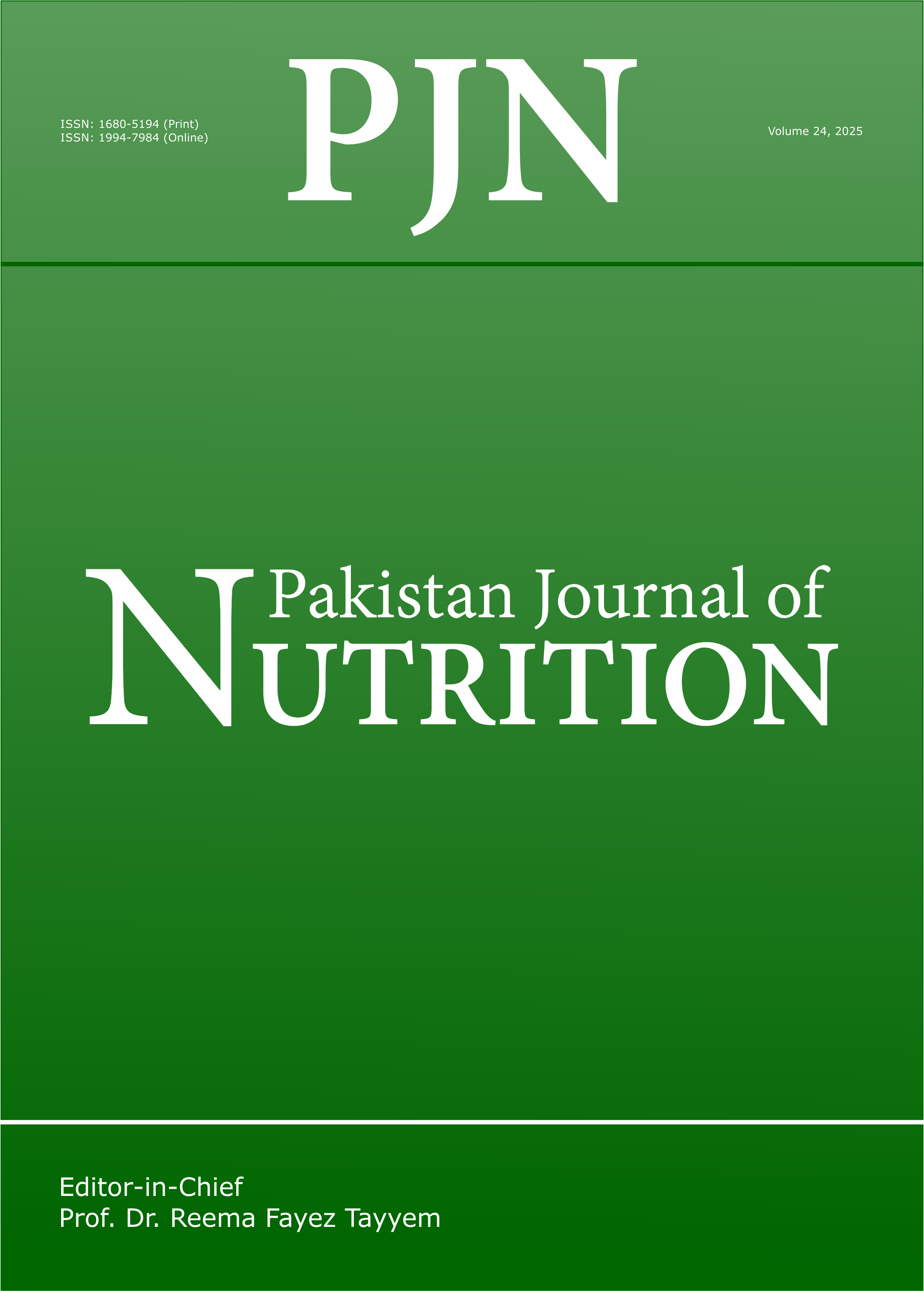Energy and Fluid Intake among University Female Students During and after Holy Ramadan Month
DOI:
https://doi.org/10.3923/pjn.2009.96.99Keywords:
Energy intake, fat, fluid intake, RamdanAbstract
Insufficient daily fluid and energy intake during holy Ramadan may have adverse effects on humans’ health. In previous studies the importance of energy, macro and micro nutrients intake were emphasized whilst the importance of fluids intake were overlooked, so in this study, daily fluid, energy ,fiber and Ca intake of female students during Ramadan and after Ramadan were investigated and compared. In this descriptive study, 60 volunteer female students who lived on campus were recruited. Information on food and fluids intake was collected by using a three day food and fluid intake weighed record method in Ramadan and after Ramadan. This study was conducted in School of Public Health and Nutrition of Tabriz University of Medical Sciences in, 2005. In comparison with Ramadan, daily energy intake and the percentage of energy from fat sources increased significantly after Ramadan. (1400±571 vs. 1629±589kcal and 23% vs 32%). The average daily intake of fluids during Ramadan was higher than that of after Ramadan (2392±800 vs 1685±802ml). However the mean daily intake of fluid both during and after Ramadan was lower than the recommended values. The most consumed beverages during Ramadan were tea, water, soft drinks, milk and others whilst after Ramadan were tea, water, milk and soft drinks and others, respectively. Adequate energy and fluid intake, particularly milk and water in students during holy Ramadan are strongly recommended.
Downloads
Published
Issue
Section
License
Copyright (c) 2009 Asian Network for Scientific Information

This work is licensed under a Creative Commons Attribution 4.0 International License.
This is an open access article distributed under the terms of the Creative Commons Attribution License, which permits unrestricted use, distribution and reproduction in any medium, provided the original author and source are credited.

